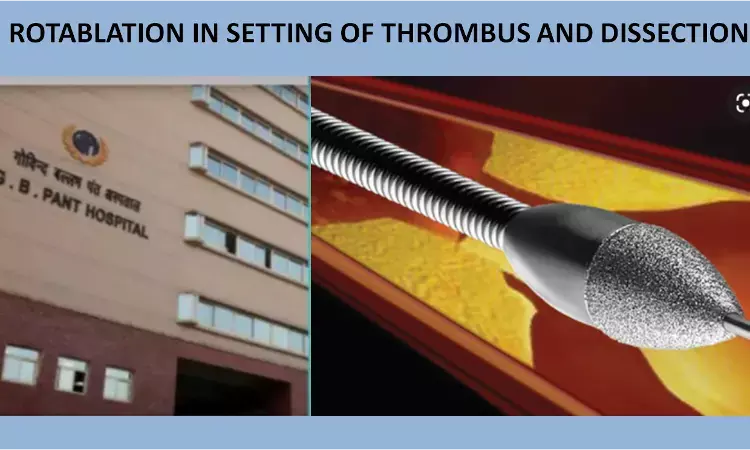- Home
- Medical news & Guidelines
- Anesthesiology
- Cardiology and CTVS
- Critical Care
- Dentistry
- Dermatology
- Diabetes and Endocrinology
- ENT
- Gastroenterology
- Medicine
- Nephrology
- Neurology
- Obstretics-Gynaecology
- Oncology
- Ophthalmology
- Orthopaedics
- Pediatrics-Neonatology
- Psychiatry
- Pulmonology
- Radiology
- Surgery
- Urology
- Laboratory Medicine
- Diet
- Nursing
- Paramedical
- Physiotherapy
- Health news
- Fact Check
- Bone Health Fact Check
- Brain Health Fact Check
- Cancer Related Fact Check
- Child Care Fact Check
- Dental and oral health fact check
- Diabetes and metabolic health fact check
- Diet and Nutrition Fact Check
- Eye and ENT Care Fact Check
- Fitness fact check
- Gut health fact check
- Heart health fact check
- Kidney health fact check
- Medical education fact check
- Men's health fact check
- Respiratory fact check
- Skin and hair care fact check
- Vaccine and Immunization fact check
- Women's health fact check
- AYUSH
- State News
- Andaman and Nicobar Islands
- Andhra Pradesh
- Arunachal Pradesh
- Assam
- Bihar
- Chandigarh
- Chattisgarh
- Dadra and Nagar Haveli
- Daman and Diu
- Delhi
- Goa
- Gujarat
- Haryana
- Himachal Pradesh
- Jammu & Kashmir
- Jharkhand
- Karnataka
- Kerala
- Ladakh
- Lakshadweep
- Madhya Pradesh
- Maharashtra
- Manipur
- Meghalaya
- Mizoram
- Nagaland
- Odisha
- Puducherry
- Punjab
- Rajasthan
- Sikkim
- Tamil Nadu
- Telangana
- Tripura
- Uttar Pradesh
- Uttrakhand
- West Bengal
- Medical Education
- Industry
Rotablation in presence of thrombus and dissection: a case report

A team of cardiologists led by Dr. Saibal Mukhopadhay at GB Pant hospital, New Delhi performed Rotablation in a case of coronary dissection and thrombus which are considered contraindications as a bailout strategy.
A 60-year-old gentleman, a known case of stable angina on medical therapy for 5 months presented with rest angina, ST depressions in anterior leads and elevated Trop T levels. Coronary angiogram revealed critical calcific lesion in proximal LAD and accordingly angioplasty was planned. As the lesion was non-dilatable with non complaint and cutting balloons, plaque modification with rotablation by using 1.5 burr was done. A type B dissection was noted in proximal LAD and lesion was still non dilatable with balloon. Stent was deployed from mid to distal LAD with residual stenosis along with non flow limiting Type A dissection in proximal LAD. Staged PTCA to proximal LAD was planned the next day with 1.75 burr which was not available on same day. As patient was aymptomatic it was decided to allow dissection to heal and angioplasty to defer for next 4 weeks.
On the 9th day after angioplasty patient developed complete thrombotic occlusion of proximal LAD at the site of dissection. Rotablation, in presence of both thrombus and dissection, was successfully done adopting some precautions as an emergency bailout procedure. Patient was discharged in a stable state after 72 hours following procedure.
Rotablation is usually contraindicated in presence of dissection and thrombus. Rotablation in presence of dissection can lead to entrapment of the flap in the rotating burr leading to progression of dissection distally or sometimes there can be subintimal tracking of burr leading to perforation. In the presence of thrombus platelet activation and aggregation by the spinning burr or distal embolization of the thrombotic material promoting slow or no flow can occur.
Saibal et al said that some clinical conditions compel using rota despite presence of above contraindications.
Precautions need to be taken in such situation are highlighted in this study.
1) to start with the 1.25mm burr and follow a step up burr approach
2) brief runs not exceeding 15 s at normal recommended speed of 1 40 000–1 50 000 rpm with check for dissection propagation/ abrupt closure/perforation after each run
3) avoid rotating the burr at slower than recommended speed or deceleration of more than 5000 rpm
4) avoidance of polishing run to minimize contact time of burr with dissection flap
5) availability of a covered stent in case of perforation
6) Authors conclude-"Severe coronary dissection or acute thrombotic occlusion should remain a contraindication for rotablation."
This article's writer was a co-author of this case report.
Source: European Heart Journal - Case Reports: doi.org/10.1093/ehjcr/ytab153
MBBS, M. D. Respiratory Medicine
Dr Sravan Kumar V, completed his M. B. B. S from SRMC, Nandyal and M. D. in Respiratory Medicine from the JSS Medical College, Mysore. After completing MD. he worked as Senior resident in Kasturba Hospital, Manipal. He is actively involved in various research activities of the department. Currently he is working as senior resident in Mallareddy medical college for women, Hyderabad. He can be contacted at editorial@medicaldialogues.in.
Dr Kamal Kant Kohli-MBBS, DTCD- a chest specialist with more than 30 years of practice and a flair for writing clinical articles, Dr Kamal Kant Kohli joined Medical Dialogues as a Chief Editor of Medical News. Besides writing articles, as an editor, he proofreads and verifies all the medical content published on Medical Dialogues including those coming from journals, studies,medical conferences,guidelines etc. Email: drkohli@medicaldialogues.in. Contact no. 011-43720751


